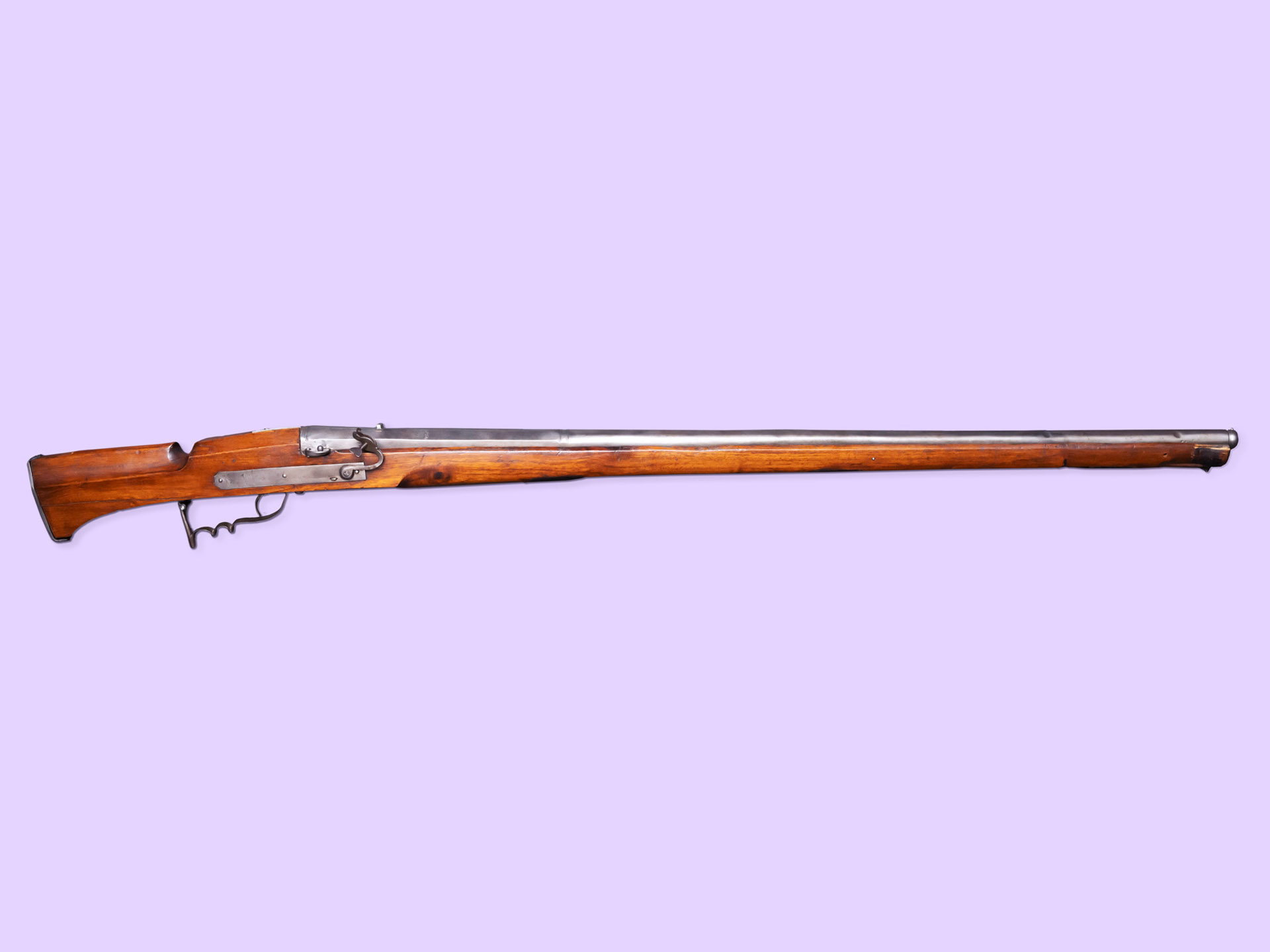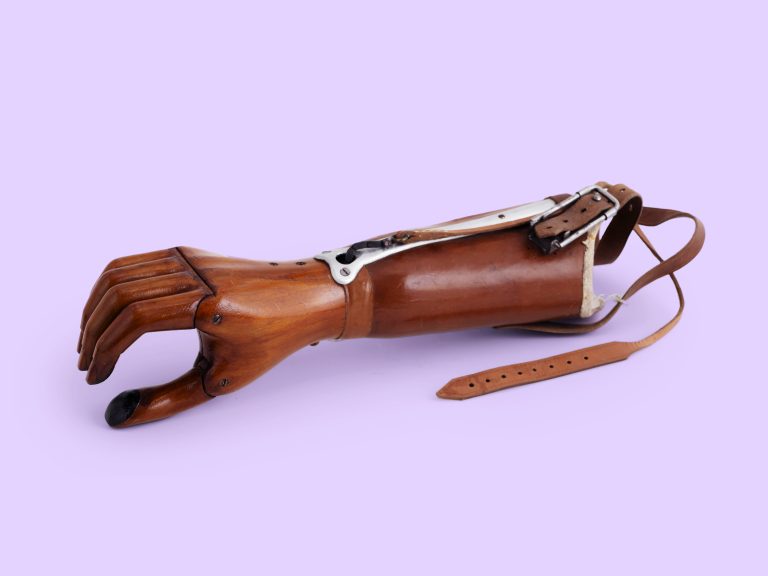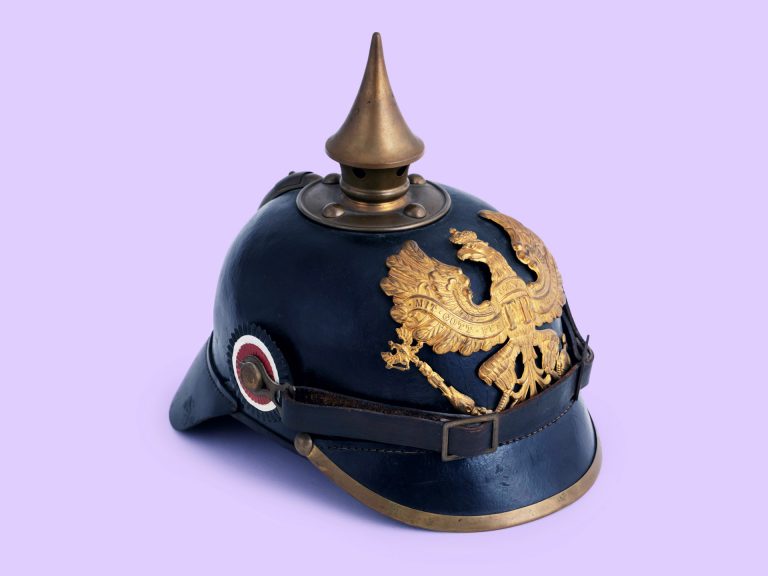Musketeers in the Thirty Years’ War
The armies deployed in the Thirty Years’ War were largely made up of infantry. Whilst pikemen engaged in close combat, musketeers fired their muskets – long muzzle-loading firearms – from longer range.
Muskets were single-shot firearms; the musketeer had to set his weapon down after firing each round, in order to reload. To this end, he would pour gunpowder into the gun barrel and then push a round metal ball down its fullest extent with a ram rod. Filling the flint lock with a little powder, the musketeer then rested his heavy weapon on a forked stick so as to be able to aim. The procedure involved up to 30 separate movements and meant that even a trained musketeer could fire no more than two rounds a minute.
The need to work in a concentrated manner in an exposed position meant that the musketeers relied on the protection provided by the pikemen whose long halberds kept fast-moving cavalry at a distance. Firearm technology improved over the course of the war and guns became shorter and lighter.
The musket in the Deutschlandmuseum
Matchlock muskets used a firing mechanism involving a slow burning match held in a clamp at the end of a small curved lever in the stock of the weapon. Pulling the lever brought the match into contact with a small gunpowder priming. The resulting explosion ignited the black powder in the barrel and propelled the musket ball out.
As muskets were difficult to aim with any great degree of accuracy, they were deployed as volley or barrage weapons; firing a large number of musket balls at the advancing enemy would ensure that a significant number of enemy troops were hit.
The matchlock musket in the Deutschlandmuseum dates from the 16th century and was very probably still in use during the Thirty Years’ War. Then as now, well-maintained weapons were used over several generations. The weapon has an overall length of 157 cm with a barrel length of 122 cm. The musket fired an 18 mm ball, which was standard for muskets of the time. The maker is unknown, but a mark on the barrel is reminiscent of a crown.
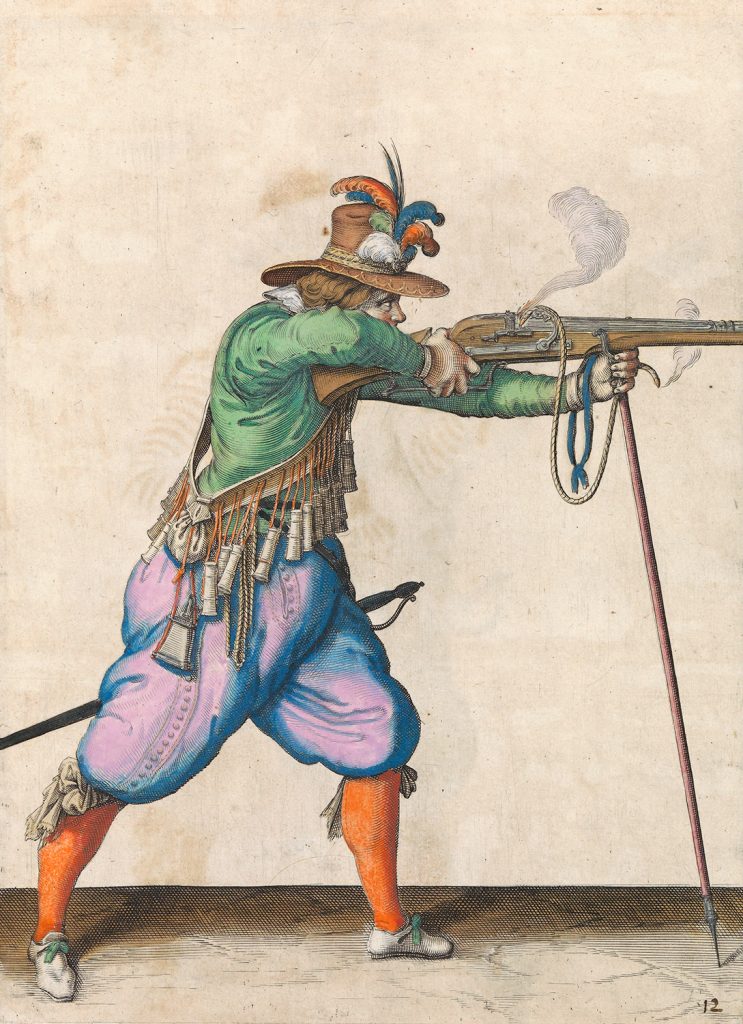
Illustration from an instruction manual for the use of a matchlock rifle Coloured engraving, Jacques de Gheyn, ca. 1597-1607 (Source: Rijksmuseum)
An old but reliable and affordable technology
With an effective range of only 200-250 metres, musketeers were required to close on the enemy, making them dependent on the protection provided by the pikemen. The effect of the musket balls was devastating. The soft lead of which they were made deformed upon impact causing far greater wounds than modern rifle cartridges, which produce smooth and clean shot channels. Musket balls usually did not exit, but remained lodged in the body, which could cause severe infections. Most soldiers hit by bullets died from the long-term effects of the wounds rather than from the direct hit.
New trigger mechanisms were developed from the 16th century onwards. A particular development was the wheel lock, which made it possible to manufacture smaller and lighter weapons. Matchlock rifles were however cheaper to manufacture and were extremely reliable and easy to maintain, even under adverse conditions. Despite their outdated technology, they therefore remained the infantry’s main long-range weapon throughout the Thirty Years’ War.
Property information
Designation
- Date 16th Century
- Gallery The Reformation
- Category Weapons
- Origin Germany
- Dimensions 157x20x15 cm (WxHxD)
- Material metal, wood
Property information
Designation
- Datierung 16th Century
- Epochenraum The Reformation
- Kategorie Weapons
- Herkunft Germany
- Dimensionen 157x20x15 cm (WxHxD)
- Material metal, wood

About the Deutschlandmuseum
An immersive and innovative experience museum about 2000 years of German history
Reading tips and links
Lifesaver? The German Steel Helmet in the First World War
German Tank Museum Munster
Lifesaver? The German Steel Helmet in the First World War
German Tank Museum Munster
Share article
Other objects in this collection
Discover history
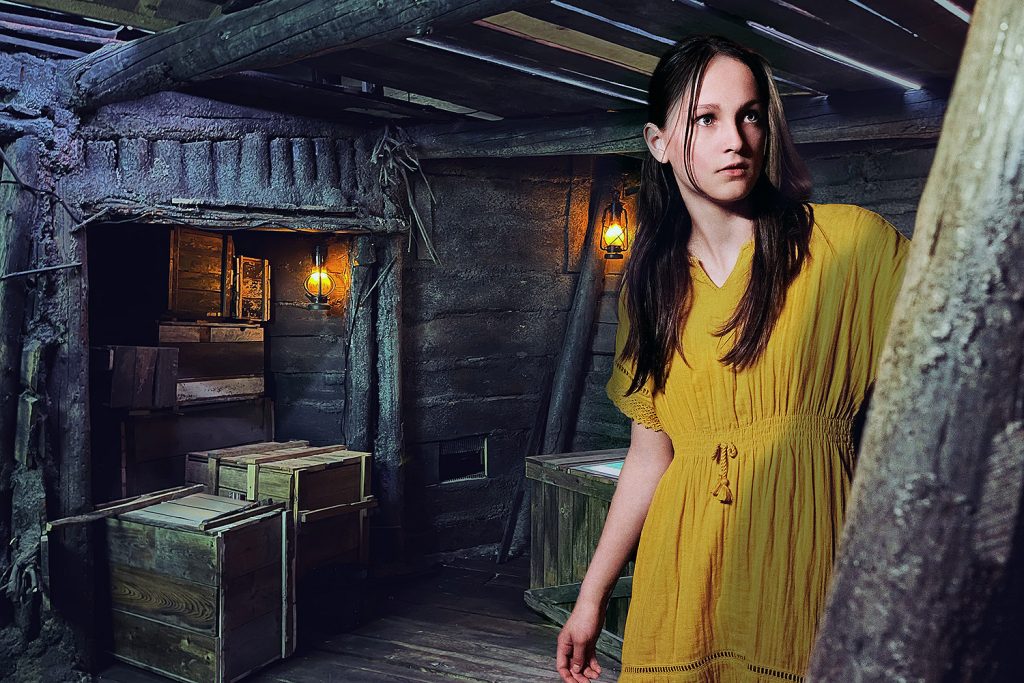
Visit the unique Deutschlandmuseum and experience immersive history
2000 Jahre
12 Epochen
1 Stunde

